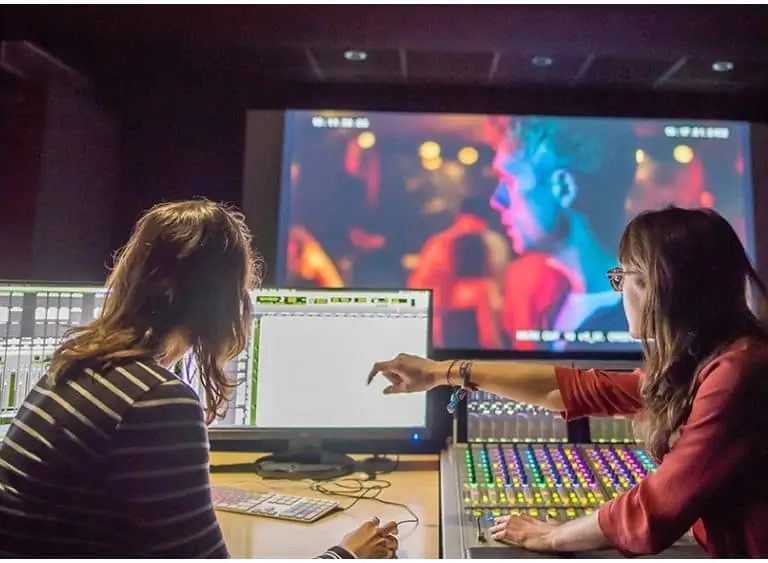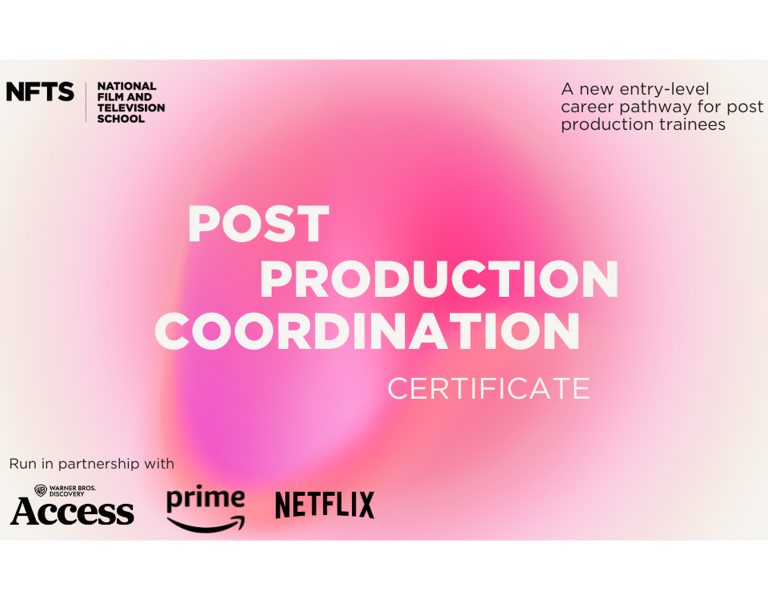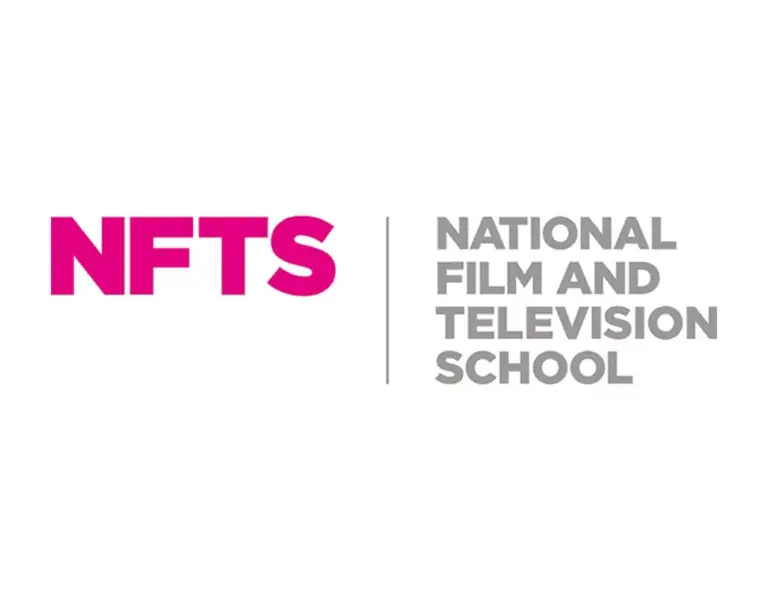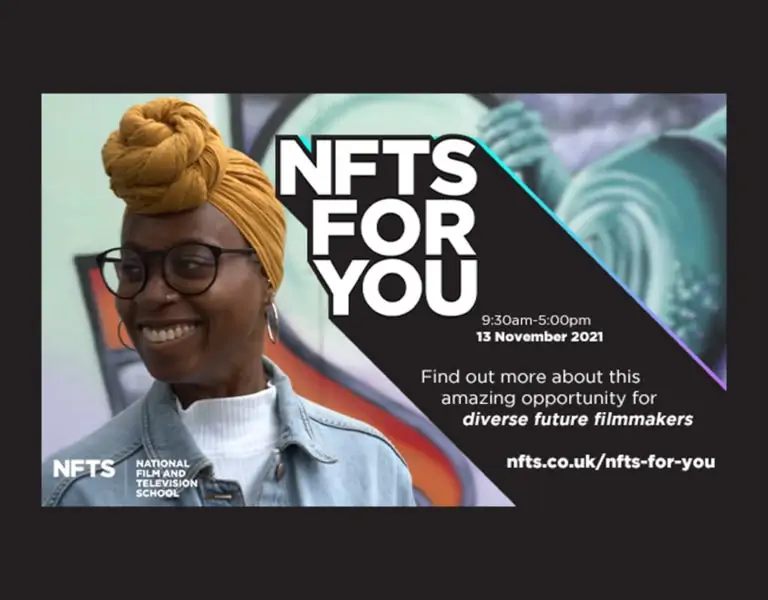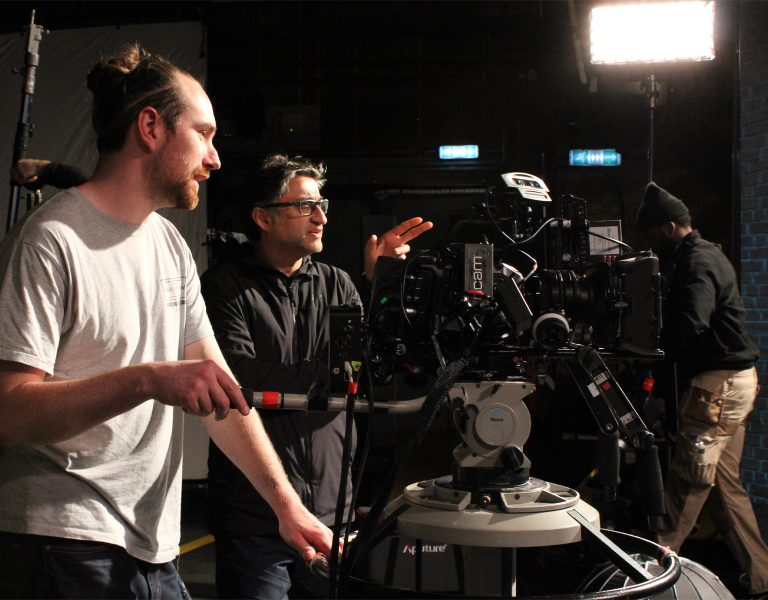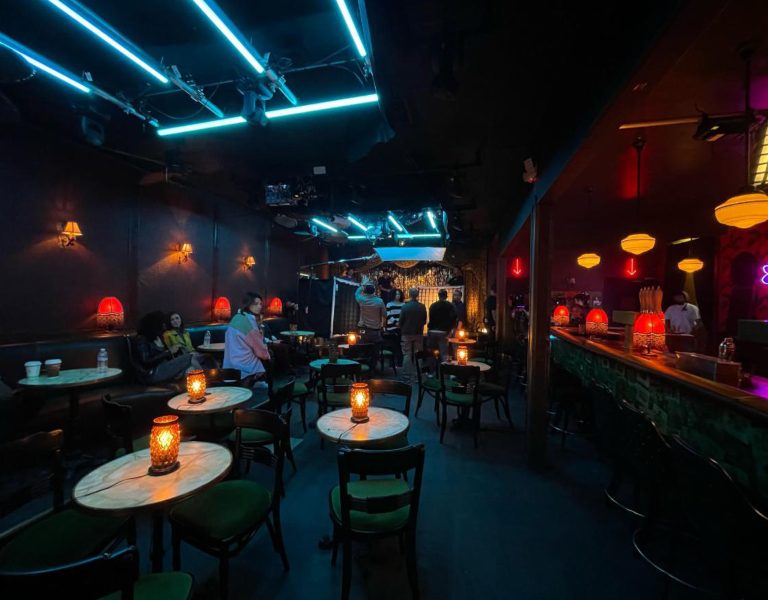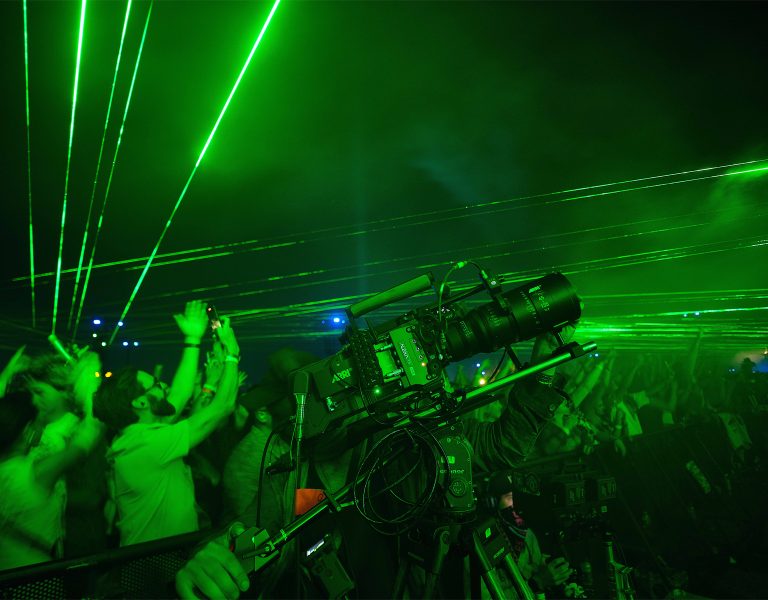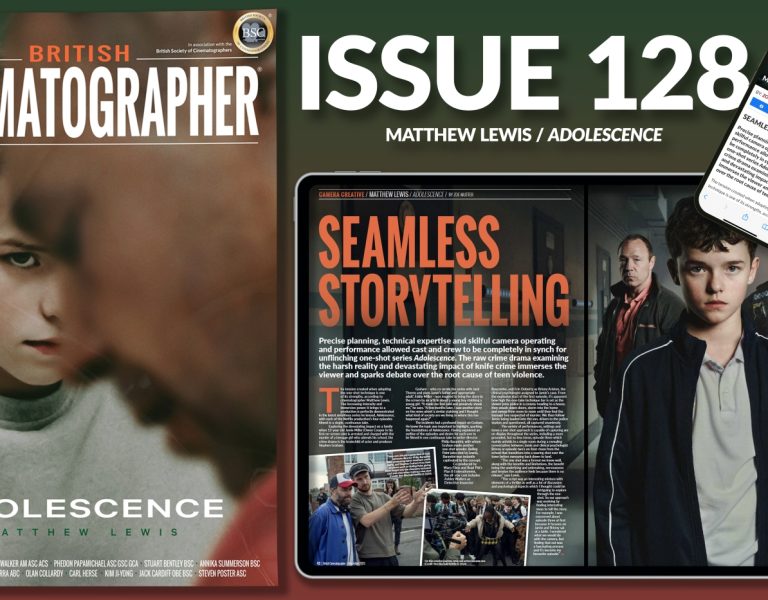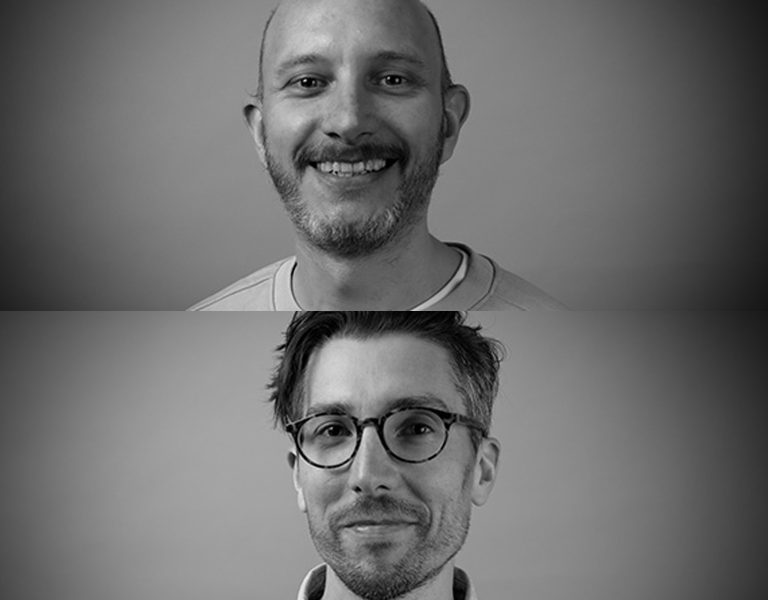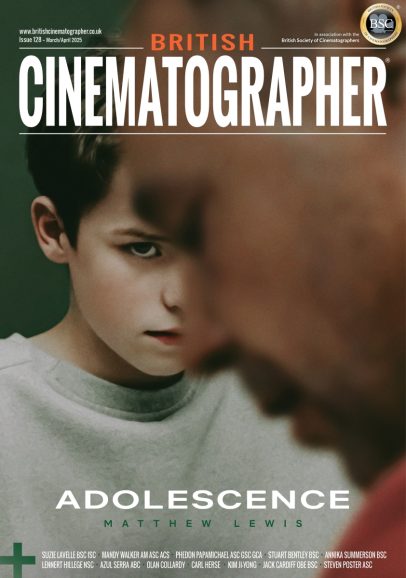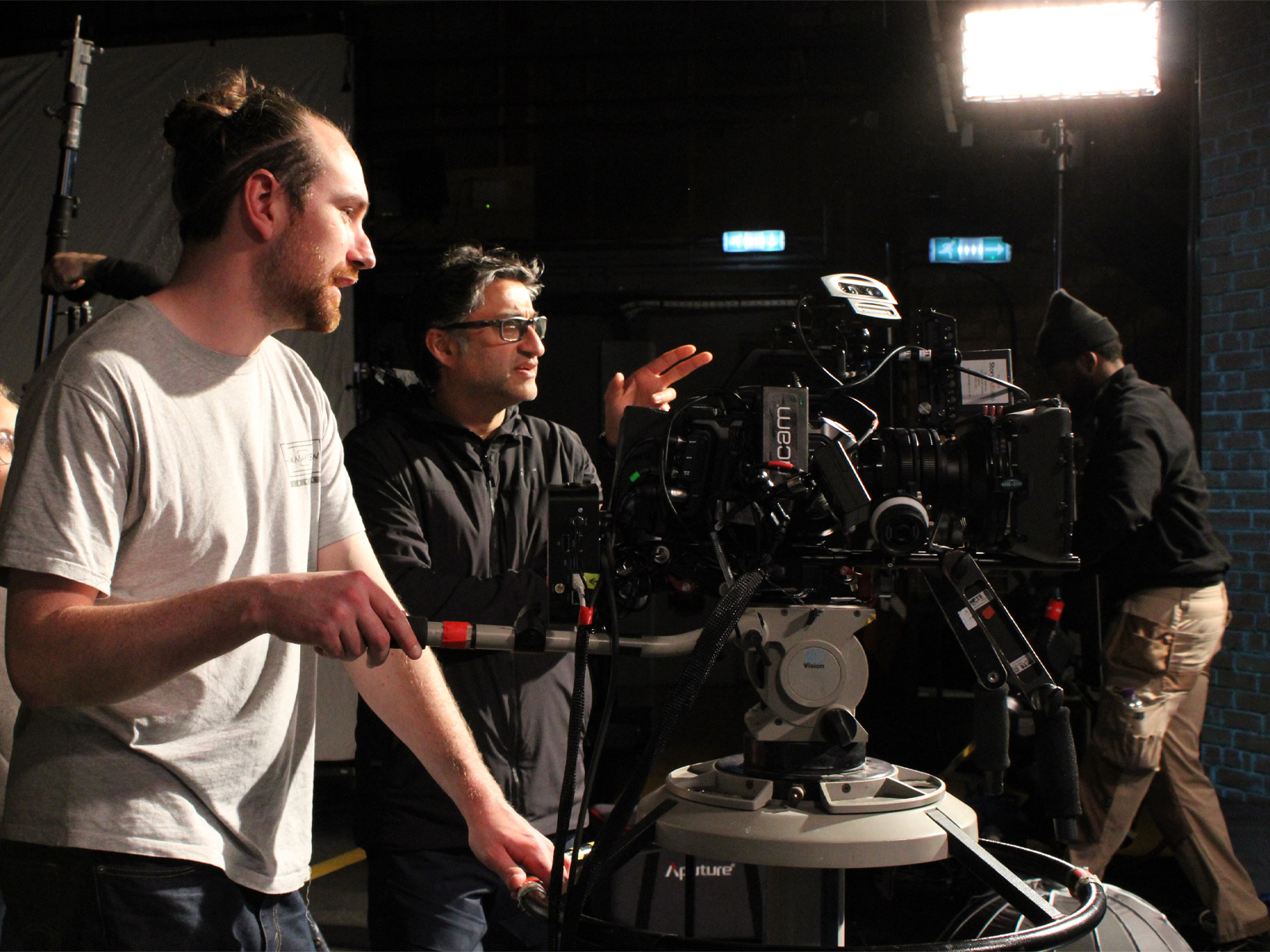
How Asif Kapadia harnessed cutting-edge technology to bring 2073 to life.
When Oscar-winning director Asif Kapadia set out to create his recent dystopian docu-drama, 2073, he wasn’t sure exactly how he would bring it to life. But he knew one thing for certain – it was a vital story that needed to be told. Starring Samantha Morton (The Whale, Minority Report), Asif’s vision was of a dystopian future where civil and environmental rights had been stripped away by an all-powerful tech elite.
Beginning with the voices he trusted most: journalists renowned for speaking truth to power, he conducted a series of interviews with them, laying the foundation for what would later become a hybrid of archive footage, voiceover, and live-action drama in what Asif calls “true science fiction.”
As he built the world of 2073, Asif recalled his long-standing relationship with the National Film and Television School (NFTS) in Beaconsfield and its cutting-edge LED volume virtual production stage. A previous visit had sparked his curiosity: “I held a Masterclass at the NFTS a few years ago, and I saw the volume and thought, ‘OK, can I come back one day and do a little test?’ For all of us, it was an experiment.”
Using the volume at NFTS allowed Asif to test key aspects of his vision before moving into the costlier production stages. While he had previously worked with a volume stage on David Fincher’s Mindhunter, using it primarily for simple backplates in driving scenes, 2073 presented an entirely new creative challenge.
“We set up four or five different sets, all quickly assembled using the Unreal Engine online store.” Asif explains. “‘Let’s build an office. I want to do a museum. I’d like to shoot a scene in a sequoia forest.’ We played it back, and it was fantastic, a really valuable test.”
Johnny Johnson, Senior Creative Technologist at the NFTS, prepared the digital environments in Unreal Engine and, with his team, ran the LED volume on the day: “We had a number of sessions before the shoot, talking about where the locations would be within those scenes before optimising them. Asif was great to work with and really brought energy. I think he liked the idea that he could just try loads of things really quickly, and that fits with his style of filmmaking.” Johnny notes that the School invested in its virtual production stage several years ago and has continuously upgraded it to stay ahead of technological advancements. “We got in early, so for students interested in this type of filmmaking, it’s a fantastic resource. And once the word got out, everyone wanted to use it all the time.”
In 2073, some scenes feature point-of-view shots from characters exploring disused buildings, seamlessly intercut with reverse shots of Samantha Morton, filmed on a volume stage and carefully matched to the archive footage. “It was about mixing archive with volume, testing footage on the volume screen here, and then quickly reviewing and cutting it into the film. The result looked amazing. When it works, no one can tell it is volume—that’s the whole point, right? You shouldn’t know how something’s been made. Nobody has any idea.”
Asif was eager for his test shoots at the NFTS to be just as valuable for students training there as they were for his own experimentation. Many were included as part of his crew, gaining hands-on experience with cutting-edge technology.
“I didn’t study at NFTS, but I’ve had a long relationship with the School. I wouldn’t be a filmmaker if I hadn’t gone to film school. And NFTS is the film school—it has the best equipment, the best teachers,” says Asif. “I keep returning because I like giving something back to filmmakers and students. I thought, why don’t we just try it? Hopefully, the students learned something and realised they have all this incredible technology at their fingertips.”
Putting together a test shoot with Asif and his team was a great opportunity, says Becky Gregory-Clarke, Head of Innovation at the NFTS. “At the time, we were working with Royal Holloway University on a training and R&D project called StoryFutures Academy, and so we were actively exploring ways to help storytellers use new technologies within their craft. Working with Asif was a win-win; it helped him explore his creative options, and helped us develop our own knowledge, as well as creating some fantastic opportunities for our students and graduates – which included a broad cross-section from disciplines including our Cinematography, Assistant Directing and Floor Managing and Creative Business courses.”
The experience was such a success that Asif is already considering how to incorporate similar technology into future projects. “I really enjoyed working with volume, and I’ll definitely use it again,” he says. “I have another project in the works. If it happens, it’ll be a genre I’ve never explored before, which is exciting. And yes, the plan is to integrate volume into it. When I was a student, Ken Loach told me filmmaking is like walking a tightrope…without a safety net. Every film should feel like stepping into the unknown. If you fall, you crash. But you know what? Let’s go!”




